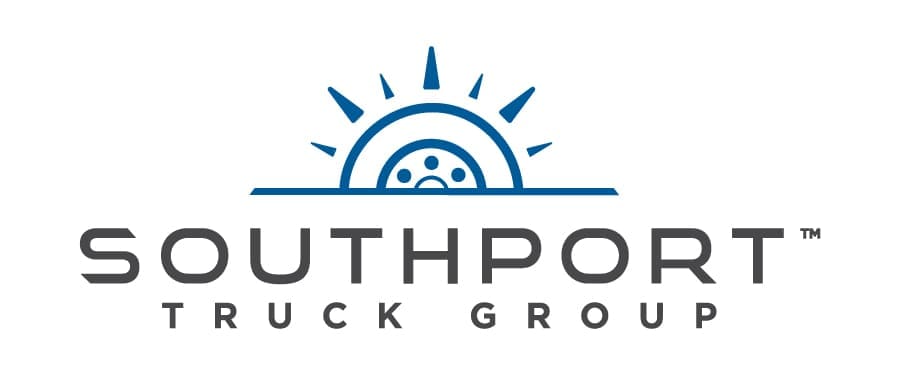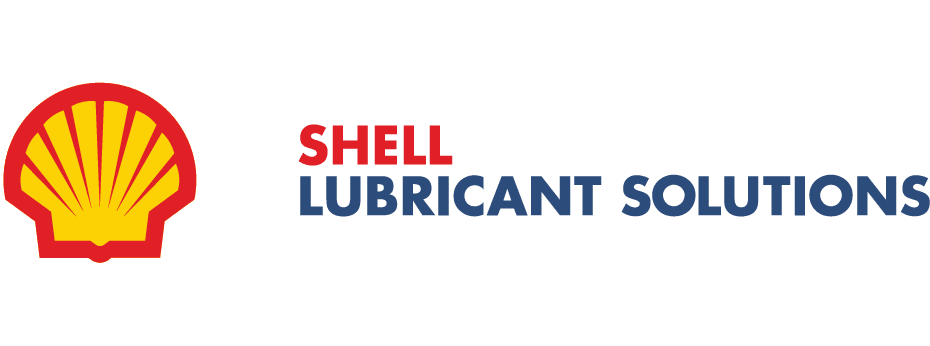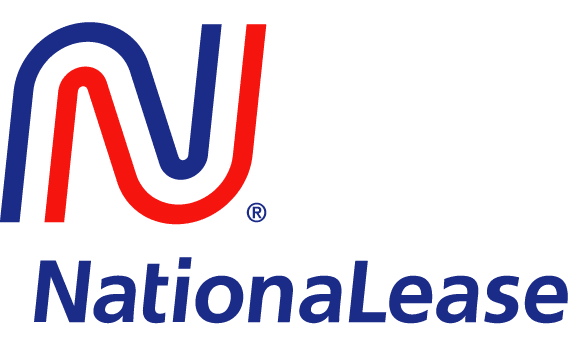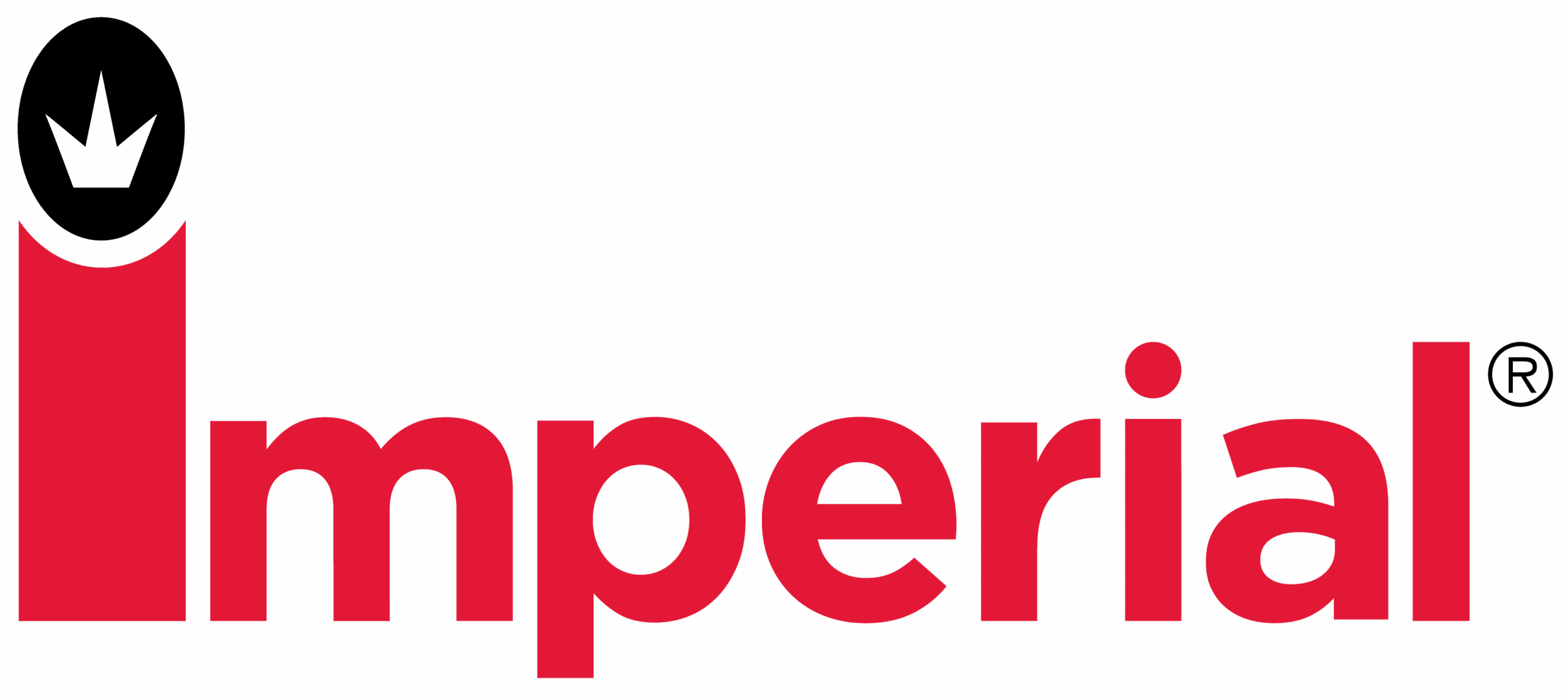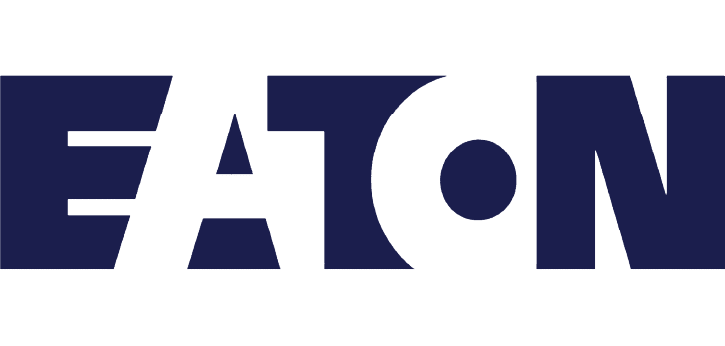Digital Procurement Service Solutions: Crafting A Comprehensive Plan For Managed Services
Digital Procurement Service
Organizing digital procurement and ensuring that it follows the companies standards for managed services is crucial for businessesustainability. Many executives, especially those in the finance department, seek out managed services to sustain their business and remain competitive in the executive market. However, this requires having comprehensive plan in place for leveraging digital procurement services.
For executives and in-house professionals looking to leverage managed services, crafting comprehensive plan is essential. It involves navigating through the complexities of digital procurement while simultaneously maximizing value, streamlining processes, and guaranteeing strategic advantage. To that end, this article offers an overview of the steps and strategies that executives can take to create an effective digital procurement plan.
1. Establish Clear Business Goals and ObjectivesThe first step to crafting comprehensive managed services procurement plan is to establish clear goals and objectives. Key businesstrategies should be closely considered and analyzed in order to ensure that the plan is aligned with the companies overall objectives. Executives should take some time to consider questions such as the companies long-term vision, short-term objectives, strategic targets, and budget considerations.
2. Define Scope, Timeline, and Processes Once the goals and objectives have been established, executives should define the scope, timeline, and processes of the digital procurement plan. clear description of the managed services to be procured should be documented, and timeline should be established for when the service should be procured. Additionally, detailed process for the managed services procurement should be created. This includes description of the method used to select vendors as well as what type of information should be collected and managed.
3. Source Potential VendorsOnce the scope, timeline, and procurement processes have been established, the next step is to source potential vendors. Executives should research prospective managed services vendors and evaluate their capabilities based on their expertise, personnel, qualifications, and experience. thorough market analysis should also be conducted to assess the availability of services from potential vendors. Furthermore, it is important to consider if any potential vendors have partnerships with other companies that could positively influence the services procured.
4. Develop Evaluation CriteriaAs the list of potential vendors is evaluated, executives should develop criteria for making final decision. It is important to consider the evaluation criteria that will ultimately affect the selection of the managed service provider. These criteria should include review of factors such as credentials, industry expertise, customerservice, and customer reviews. Furthermore, the evaluation criteria should be used to measure the performance of the provider once the managed services have been acquired.
5. Negotiate and Monitor Agreements Once the evaluation process has been complete and favorable managed services provider has been identified, it is important to negotiate contracts with the chosen vendor. Executives should ensure that the negotiated contracts are clearly spelled out to ensure that the interests of all parties involved are properly represented. Additionally, it is important to monitor the contracts on an ongoing basis to ensure that the vendor is upholding their end of the agreement.
6. Implement and Track InitiativesFinally, executives should create initiatives for the successful implementation of managed services. The initiatives should be monitored on an ongoing basis to ensure that the managed services are being leveraged optimally and are having positive impact on the company. Additionally, tracking the metrics associated with the initiatives is important in order to properly assess their impact on the company.
In summary, crafting comprehensive digital procurement plan for managed services is an essential part of digital transformation. Executives must take steps to ensure that their digital procurement plans are aligned with their overall business objectives. As result, it is important to establish clear goals and objectives, define the scope, timeline, and procurement processes of the plan, source potential vendors, develop evaluation criteria, negotiate and monitor agreements, and finally, implement and track initiatives. With detailed plan in place, business can maximize the value of their managed services and ensure their success.
Digital Procurement Risk: The Consequence Of Not Leveraging Software
Digital Procurement Service
Digital procurement, rapidly growing field of managed services, is transforming how business purchase host of goods, materials, and services in the e-commerce space. Yet, while this digital solution is proving beneficial to many enterprises, there are inherent risks of not leveraging the appropriate software.
The impulse to use digital procurement services often comes from the insight that manual material, goods, and service procurement can be expensive, overly bureaucratic, and time-consuming. However, even though there are all too obvious attractions of these services, neglecting to invest in and use the software necessary for them carries significant risk.
The most apparent of these concerns is the lack of security associated with the data collected and utilized. Without the proper software, companies are exposing themselves to host of cyberattacks from those looking to seize information that could later be used to infiltrate networks or commit financial fraud. Defending against such threat is immensely difficult, and should anything malicious get through, the potential financial and reputational damage could be crippling.
Lack of software can also adversely impact the accuracy of information. Human data entry can be prone to errors, as can manual data transfer. But with the advanced and often integrated features of digital software for procurement, it is possible to automate and track the transfer of such information, reducing the likelihood of errors or miscalculations. The automation facilitated by software also reduces manual labor needs and subsequently streamlines the process, making it faster and more efficient.
Furthermore, degree of customization is possible with the right software. Numerous procurement and inventory solutions are configurable and scale to fit the specific needs of each organization, enabling them to tailor the process in ways that are most beneficial. They can establish approval workflows, report on cost and usage, and improve the effectiveness of supplier recontracting, among other things.
Because of such tempting benefits, it is easy to understand why many business are turning to digital procurement services. Since the volume and value of purchase orders and invoices continue to grow exponentially, proper software is must-have. Those who maintain the status quo run greater risk of data breaches, errors, and overall ineffectiveness, which can have serious repercussions down the road.
In conclusion, digital procurement provides huge advantages for those working with large quantities of purchase orders and invoices. However, for it to work effectively, there must be attention placed on the underlying software. Neglecting to invest in the coding needed to process and manage the data can lead to plethora of costly consequences. Ultimately, finance executives must weigh the reward of digital procurement services against the risks of not using software for them.
Digital Procurement - The Way Of The Future For Managed Services
Procurement Function
As the digital age continues to expand, companies of all sizes are exploring innovative solutions to meet the needs of their diverse network of stakeholders, suppliers, and partners. One of the solutions gaining traction is the use of digital procurement. In this article, we explore how digital procurement can serve as an efficient, cost-effective way to get the most value out of managed services, while reducing operational costs.
What Is Digital Procurement?Digital procurement is the process of sourcing and purchasing goods and services electronically, using an integrated suite of tools or platforms. This can involve range of functions such as automating budgeting, locating and evaluating suppliers, negotiating terms and prices, and managing contracts. Digital procurement solutions can provide real-time analytics, interactive marketplaces and visualizations, and intelligent machine learning that helps uncover trends and opportunities in the marketplace.
How Can Digital Procurement Help Managed Services?Digital procurement solutions can provide broad range of benefits to managed service providers (MSPs). From streamlining and automating the entire procurement process to gaining deeper insights into supplier performance, these solutions can be used to create powerful competitive advantages.
Faster and More Efficient ProcurementA digital procurement solution can greatly simplify the process of acquiring and contracting for managed services, resulting in faster and more efficient management of the procurement process.The integrated suite of tools provided by the solution provides real-time access to all information related to the managed service procurement. Automated alerts can be sent when action is required and supplier ratings can be tracked to ensure the best performance.
Improved TransparencyA digital procurement platform can provide real-time view of all supplier activities, contractual agreements, operational performance metrics and spending data, giving MSPs complete visibility into their procurement process. This can lead to improved decision-making and risk-reduction strategies, as well as improved supplier performance, which can result in better service, better pricing, and an overall lower total cost of ownership (TCO).
Reduced Operational CostsDigital procurement can reduce operational costs in several different ways. Automation of the entire procurement process can save up to 50% in time and effort, while eliminating manual errors and paperwork. Artificial intelligence (AI) algorithms help to identify discrepancies in quotes and uncover cost savings opportunities. Smart contracts can be used to reduce costs and risks associated with manual contract management. Finally, digital procurement solutions are highly scalable, allowing MSPs to quickly expand operations as needed.
Increased Customer RetentionDigital procurement solutions can help MSPs to improve customerservice and enhance their existing customer relationships. Customers can access an online marketplace to browse, evaluate, and select managed services for their own needs, resulting in better customer engagement and improved customer retention.
ConclusionDigital procurement can provide MSPs with wide range of benefits for their managed services operations, including faster and more efficient procurement, improved transparency, reduced operational costs, and increased customer retention. As the need for managed services continues to grow, digital procurement solutions will become increasingly important for MSPs looking to get the most value from their procurement process.
Delivering The Benefits Of Achieving Managed Services Through Outsourcing Procurement
Outsourcing Procurement Service
As the global economy continues to develop and markets become increasingly competitive, business executives especially those working in the finance department are under constant pressure to identify innovations that could potentially reduce costs and help build competitive edge. Outsourcing procurement services, as part of managed service package, could offer powerful form of value for organizations seeking to be more efficient, cost-effective, and able to adapt to rapid changes in technology and the markets.
One of the most common managed services, procurement services involves selecting an outside provider to manage the procurement process, including forecasting and analysis, negotiations, and the performance of management duties. In outsourcing these services, organizations are able to reduce costs, increase efficiency, and free up internal resources for other core functions.
By outsourcing the process, companies can explore different suppliers for specific products and services that might not be available in-house. Technology is changing rapidly and it is important to select suppliers that can deliver timely updates, so that organizations can remain competitive in the market. Additionally, by outsourcing services such as procurement services, companies can benefit from large-scale and comprehensive market studies that allow them to gain better insight into trends and prices.
Therefore, when considering managed services, organizations should take into account the potential impact that outsourcing procurement services can have when they are used in concert with the other elements of managed service package. Here is step-by-step guide to achieving the benefits of outsourcing procurement services:
1. Understand Your Necessities: Assess your current procedures and identify the core functions and capabilities you need from supplier in order to pursue your operational goals. Establish criteria for selecting supplier based on the level of service, technology, pricing, and other factors essential for successful agreement.
2. Perform Market Research: Analyze both internal and external markets to gain an understanding of the current and future trends in the industry you?re attempting to serve. Research potential suppliers in terms of the benefits they offer, including industry expertise, technology, pricing, service levels, and reliability.
3. Analyze Proposals: Gather and examine the proposals from vendors and compare them to the criteria established before market research began. Generate weighted score for each option, using the criteria to generate selection score as an objective measure of the quality offered by suppliers.
4. Negotiate: Once your preferred supplier has been chosen, use the scoring criteria to negotiate better agreement, being sure to implement the necessary measures to ensure risks and liabilities are minimized in the process.
5. Monitor: Once the supplier has been chosen, establish key performance indicators and review processes that will be implemented to regularly monitor the effectiveness of the agreement and ensure that the supplier meets the expectations and needs of the organization.
Managing the procurement process internally can often be an arduous and costly process. By outsourcing procurement services, organizations can benefit from lower cost, improved efficiency and accuracy, better control of cash flow, fewer errors from manual labor, and access to enterprise-level suppliers. Additionally, organizations can focus their internal resources and personnel into other core activities, helping leverage the strategic value of their efforts and gain competitive edge in the market.
Creating An Effective Procure-To-Pay Policy And Procedure For Managed Services
Procure To Pay Policy And Procedure
The complexity of modern business, especially those operating in different regions, often require multi-level procurement processes and carefully designed, structured manage-to-pay policy and procedure. managed services model presents the challenges of maintaining cohesive system with proper security protocols and ever-evolving compliance regulations. To ensure complete operational efficiency and maximum results, organizations should develop and implement sensitive procure-to-pay policy and procedure to provide strong foundation for efficient operational control and superior performance.
In this article, we provide an in-depth examination of the comprehensive steps in creating an effective procure-to-pay policy and procedure for managed services. This comprehensive guide also discusses the challenges organizations may face when implementing such system and provides best-practice solutions to ensure successful and efficient operation.
Define Scope
The first step in setting up comprehensive procure-to-pay system is to clearly define the scope and objectives of the policy and procedure. This involves identifying the specific roles and responsibilities of each department and the overarching goal of the system. This allows each department to understand its role within the system, while the system as whole is kept in alignment with the organizations values and goals.
Develop Design
Once the scope and objectives have been determined, the organization can begin developing the actual design and structure of the policy and procedure. This includes setting up rules and standards such as procurement limits and transaction types, along with designing framework to ensure these rules are being followed. It is also necessary to consider potential conflicts between departments or departments and vendors and specify protocol to resolve them.
Assign Authorities and Responsibility
Once the design is complete, it is important to clearly assign responsibilities and authorities to all departments and stakeholders. This may include evaluating the possibility of outsourcing different tasks or hiring channel partners and other external entities. thorough assessment should be conducted to ensure that all parties are functioning within the parameters of the set laws, standards, and procedures.
Integrate Systems
In order for the policy and procedure to run effectively, it must be integrated with existing systems and processes. This involves creating processes to track transactions, documenting changes and tracking progress, automating reports and queries, and designing system for system access and authorization. Integration must be fool-proof and designed to ensure complete operational efficiency.
Hire Resources
For successful implementation, organizations will need to have the right people in place. This includes hiring trained personnel to ensure that the policy and procedure is being followed, monitored, and improved upon. It is also important to have strong compliance officers that are familiar with the latest regulations, as well as risk managers to mitigate potential legal and regulatory issues.
Create Control and Monitoring System
The final step is establishing comprehensive system of control mechanisms. This includes setting up periodic audit-reviews, tracking vendor payment cycles, imposing restrictions on disclosure of data and records, establishing completion time frames, and monitoring the spending and performance of all associated departments. This ensures that all aspects of the policy and procedure are being properly maintained.
Conclusion
An effective procure-to-pay policy and procedure for managed services is essential for maximum operational efficiency and performance. By efficiently creating, implementing, and maintaining such system, organizations can be sure to properly control costs and secure data while efficiently managing operations. The creation of an effective procure-to-pay system is complex process and requires the collaboration of multiple stakeholders to ensure the system runs smoothly and allows for maximum performance.
Cost-Effective Solutions To Streamline Order To Cash, Procure To Pay With Managed Services
Order To Cash Procure To Pay
There is no arguing that optimizing financial operations is an integral part of any successful business. Automation of order to cash and procure to pay processes enables business to use time and energy effectively and reduce the costs of back-office operations. Chief financial officers (CFOs) can make strategic investments in technology-driven solutions to improve operational efficiency and bottom-line performance.
Managed services help to reduce costs and boost efficiency in order to cash and procure to pay. This article will provide CFOs with guide to understand the available solutions, prioritize their deployments, and measure their benefits. It begins with look at the advantages of managed services for financial automation and then works through how to get started.
Benefits of Managed Services
Managed services provide business with continuous optimization of operations and cost-effectiveness. Deployment of managed services eliminates the need for capital expenditure (CapEx), allowing companies to on-board financial automation quickly and easier. Additionally, business that employ managed services gain access to experts who can provide best practices and advise in real time to help them accelerate their digital transformations.
Managed services provide maintainable applications that are automated and integrated with other business applications and processes. This includes order to cash, procure to pay and other financial operations. As data and processes become more complex, leveraging managed services enables business to reduce the time and cost of maintaining systems and applications.
Managed services can provide:
? Scalability: scale-up or down the size of services as needs change
? Agility and time savings: rapid deployment of services and fast implementation
? Increased success rates: support from experts increases the effectiveness of deployments and implementations
? Improved accuracy and consistency: standardized processes help ensure quality control
? Streamlined processes: automated processes improve efficiency and reduce costs
? Reduced overhead costs: free up resources by minimizing the need for manual processes
Understanding the Solutions
When considering the integration of managed services for automating financial operations, CFOs should first understand their options. Solutions include the utilization of Software-as-a-Service (SaaS) models, cloud-based solutions, or an in-house combination of technologies.
SaaS is cloud-computing model in which software is delivered over the internet and allows business to rapidly deploy solutions. It automates the investment life-cycle management processes and offers scalability, open integration capabilities, and continuous product enhancements.
Cloud-based solutions are the most cost-effective options as they reduce complexity, quickly diagnose potential problems, and allow business to focus resources on core competencies. Cloud-based Softwaresolutions automatically update and maintain data, reducing manual efforts. They also provide real-time access to data, enabling CFOs to access relevant information and make decisions quickly.
When choosing solution, it is important to evaluate the features of each and select the option that best meets business needs. This includes features such as scalability and flexibility, user-friendliness, cost, security, integration and migration capabilities, availability, and user experience (UX). Additionally, an important selection criterion should be the level and type of automation needed for the business.
Choosing the Right Solution
Managed services can help businessestreamline their financial operations, integrate data from multiple sources, and provide real-time visibility into metrics such as revenue, spending, and profits.
The first step in choosing solution is to understand the existing financial processes. This includes identifying which processes can be automated, the data that needs to be integrated and transferred, and the availability of the necessary resources. CFOs should also assess the frequency of identified processes and the volume of data that needs transferring. This will provide valuable insights into which technology solution will best suit the business.
CFOs should also focus on scalability, as they will likely pursue business growth or shift priorities. The technology solution should be able to scale with the changing needs of the business, allowing CFOs to check on real-time analytics and support scalable business model.
Once the business processes, desired features, and potential solutions are identified, CFOs should compare the costs and benefits of different solutions. This includes anticipated capital expenditures and ongoing subscription costs, but should also consider the overall value the solutions will provide. For instance, while initially more costly, solutions that offer features or efficiency gains have the potential to provide long-term value.
Deployment and Implementation
Once the solution is chosen and purchased, implementation normally begins by understanding the financial operations and processes. Depending on the businessize and complexity of the existing processes, the implementation may differ. During the implementation process, CFOs should note any technical issues that arise and investigate any new features they might want to add in the future.
Once the implementation process is complete, it is essential to monitor the performance and evaluate the effectiveness of the solution. This includes determining whether the expected gains are achieved, tracking user activity, and examining the response time of operations. As certain processes become more automated, CFOs should adjust the solution accordingly to ensure optimization and scalability.
Finally, CFOs should continue to invest in training to ensure implementation and maintenance of the solution. This includes providing users with the proper information to use the system effectively and ensuring staff are comfortable with the new technology before deployment.
Conclusion
The deployment of financial automation services can significantly improve the efficiency of back-office operations and ultimately boost the bottom-line. CFOs should explore the available solutions, prioritize their deployments, leverage managed services for operational efficiency, and measure the benefits of their solutions to ensure long-term performance.
Closing The Gap: Assessing Procurement Opportunities For Managed Services
Procurement Opportunity Assessment
The success of corporation in the modern business landscape depends on finding and implementing ways to stay on steady rhythm of positive growth. The financial administration of the company is of the utmost importance and includes the process of procuring goods and services in the most cost-effective and strategic manner. Knowledge about current market conditions and trends, and rapid changes in technology, can help to inform the procurement process and help executives to assess opportunities. This article provides an insight into the process of assessing procurement opportunities for managed services, from an executive perspective.
Managed services refers to services hired outside of the organization for specialized functions, usually for period of time. The services can refer to the whole range of activities ranging from software management and computer infrastructure, to viewing important documents and records. Companies rely heavily on the efficient utilization of managed services to remain competitive, cost-effective and increase market presence. Assessing existing procurement opportunities can lead to maximum benefit.
To start the process of assessing procurement opportunities, it is best to begin by gaining good understanding of the current market. Consider the economic climate and trends in the business world. The purchase of managed services must be clear-cut decision that considers the long-term implications and the associated costs. Organize short-list of providers, evaluate the qualities and features of each, and compare the services. Assessing existing customer reviews can be helpful to analyze the customerservice quality.
The criteria used to evaluate the different services should be multi-faceted. While cost is very important factor, other aspects should also be considered. These can include the time periods of contracts, the quality of customerservice, and responsiveness to customer feedback. It can be advantageous to seek assistance from independent experts to provide more objective judgement of the different providers.
The selection process can also include comparison of the companies current services to the possible managed service procurement. Assuming the comparison favours the managed services, the next step would be to negotiate the terms of the service. In order to gain the best rates and options, open communications should be had with the providers. Important considerations to negotiate should include appropriate limitations on liability and escalation of issues, and optimal termination of the service. Also, confirm the time period associated with the contract and the specific processes governing contract renewals and extensions.
During the procurement stages, even after the awards are made, it is important to perform reviews and audits to ensure compliance with the agreements and contractual conditions. Vigorous operational management of the managed services should also be undertaken, which includes continuous assessments of the services being provided, as well as any issues and problems arising from the service. Proper communication between the service provider and the organization is also essential in ensuring successful outcome.
Procurement of managed services is beneficial when it helps the organization remain competitive and achieve improved financial benefits. However, the whole process entails making informed decisions and extensive research. Consequently, it is important that executives and decision-makers are aware of the process of assessing existing procurement opportunities to ensure that their organizations can benefit to their maximum potential.
Changing Your Procurement And Finance Game With Managed Services
Procurement And Finance
business today must always be on the quest to do more with less, especially in the finance and procurement fields. With the right managed services, business can stay competitive and get the most out their financial operations. But what is managed services and what does it have to do with finance procurement?
Managed services is an innovative way for organizations to handle their operations remotely by using third-party provider with specialized skills and training. All operations from acquisition to payments processing can be managed by qualified professional who manage operations with the highest level of efficiency and accuracy.
As C-suite Executive in the finance department, it is important for you to find reliable managed services provider to meet the needs of your organization. Here is step-by-step guide to ensure you find the right provider:
Step 1: Evaluate your organizations needs
Before deciding on managed services provider, it is important to evaluate the needs of your organization. Consider the size of your company, the scope of services you require, the duration of contract and the budget allocated for these services. This step is crucial in determining which provider is best suited for your organization and what services are needed.
Step 2: Research managed services providers
Once you've identified the needs of your organization, begin researching potential managed services providers. Ask other industry professionals in your network who they have used in the past and the results achieved. Look into reviews and testimonies from past clients, as this will give you good insight into the quality and reliability of the provider.
Step 3: Compare prices and services
Once you have narrowed down your list of managed services providers, compare their prices and services to determine which provider meets the needs of your organization and offers the best value for money.
Step 4: Check references and background
It is also important to check the references and background of the managed services provider. Ask for written references from previous clients, as well as proof of certification and any other qualifications that are necessary to ensure the provider is good fit for the job.
Step 5: Sign contract
When the provider has checked all the boxes and you feel confident they are the right choice for your organization, finally sign the contract. Make sure all expectations are clear in the contract and lay out who is responsible for what.
Finding the right managed services for your organization doesn?t have to be daunting task or require lot of effort. Take the time to research, compare and check all the references to ensure you make the best decision for your business. With the right managed services in place, you can save your organization money and time, while improving efficiency and accuracy of your procurement and finance operations.
Boosting Operational Performance With Software In Source To Pay System Managed Services
Source To Pay System
Financial executives seeking Softwaresolution to manage source to pay process frequently encounter obstacles. Longstanding processes are often entrenched among companies, making it difficult to change the long-standing processes, including the gradual access of information, the lack of integration and automated processes, and the inability to attain visibility into the process. To enhance operational performance with software for source to pay systems managed services, business will need to leverage supplier enablement platform.
Developing scalable supplier enablement platform is the key in launching successful source to pay system managed services. This platform allows business to aggregate supplier information and organize data gleaned from internal and external Softwaresolutions into single system, thereby providing complete view of all supplier interactions. Moreover, this platform offers transparency and complete visibility into supplier performance, as well as an automated workflow system to communicate with suppliers, create and manage contracts, and track invoice status. It also allows for supplier data input and later validation, providing the assurance of data accuracy.
Source to pay system managed services backed by the scalability of software provide secure end-to-end automation, analysis, integration, and digit isation of source to pay processes, significantly reducing human error and manual costs. Frameworks such as enterprise resource planning (ERP) and supplier relationship management (SRM) integrated on single platform, allow business to manage every process and every supplier. Transparency within the source to pay system helps business make strategic sourcing decisions based on data-driven insights, enabling them to obtain better results, increase their profit margins, and reduce their environmental footprint.
Employing advanced techniques like machine learning and context-driven analytics helps financial executives to identify early signs of potential non-compliance and other problems. Automating procurement activities helps to streamline financial operations, such as the management of supplier data, while allowing strategic sourcing teams to gain deeper insights. With enterprise-wide visibility, business can identify opportunities to reduce cost and identify potential issues.
To support the source to pay system with reliable managed services, it is crucial to identify the right technology provider. The provider should have comprehensive understanding of the source to pay and proven history of delivering successful solutions. It is also vital to ensure that the technology is able to interoperate with existing systems and be compliant with relevant regulations. Additionally, the provider should be able to offer industry-specific solutions and customised services.
Softwaresolutions for source to pay systems managed services offers financial executives an immense number of benefits and allows for improved operational performance. By leveraging secure end-to-end automation, business can obtain better results, generate cost savings, increase visibility, and improve regulatory compliance. In addition, advanced analytics allow business to make strategic decisions based on data-driven insights and aid in spotting potential issues before they become real problems.
Boosting Operational Performance Through Source To Pay Procurement Managed Services
Source To Pay Procurement
As Finance Executive, operational performance is crucial factor when it comes to staying competitive in the marketplace. Strategies to upgrade operational performance can be challenging, but one of the most effective ways for executives to consider is the integration of source to pay procurement managed services. By coupling advanced software with best practices for automated procurement, C-Suite executives can exponentially increase the potential value of their organization.
Using managed services for source to pay procurement provides the framework for automating routine steps in the procurement process to drive efficient operations. This is possible due to comprehensive services that serve as comprehensive platform to reduce the manual burdens of procurement while at the same time, bring order to workflows comprised of multiple parties. It helps minimize mechanical inefficiencies of the sourcing process, such as possible leakage in the supplies pipeline, while at the same time, helps standardize governance policies and responses when necessary.
In addition, managed services ensure efficient monitoring of spending by giving executives the power to access key data regarding procurements. This enables them to make informed decisions about purchasing goods and services in order to maximize their monetary resources in line with their organizational objectives. With advanced analytics at their disposal, executives can make more analytical decisions about the source to pay process, instead of relying on guesswork.
The proper use of source to pay procurement managed services also involves being able to customize the approach based on an organizations particular needs. The Softwareshould also provide an easy to use framework for collaboration with vendors to assist in quickly and accurately completing any relevant paperwork involved with the procurement process. In this way, it helps to ensure optimal contractual adherence and better compliance with regulations. Furthermore, leveraging mobile technology when possible can bolster collaboration by enabling executives and third parties to quickly and accurately communicate the details necessary for successful procurements.
Overall, leveraging the right managed services for source to pay procurement comprises one of the most viable and efficient ways for Finance Executive to execute operational performance improvement. By combining the power of software with the constant monitoring provided by managed services, executives gain unprecedented access to data to drive more accurate and efficient decisions. With the proper integration of source to pay procurement managed services, executives can be confident that their organization is working with the latest technology and best practices available, empowering them to experience maximum success within the industry.




